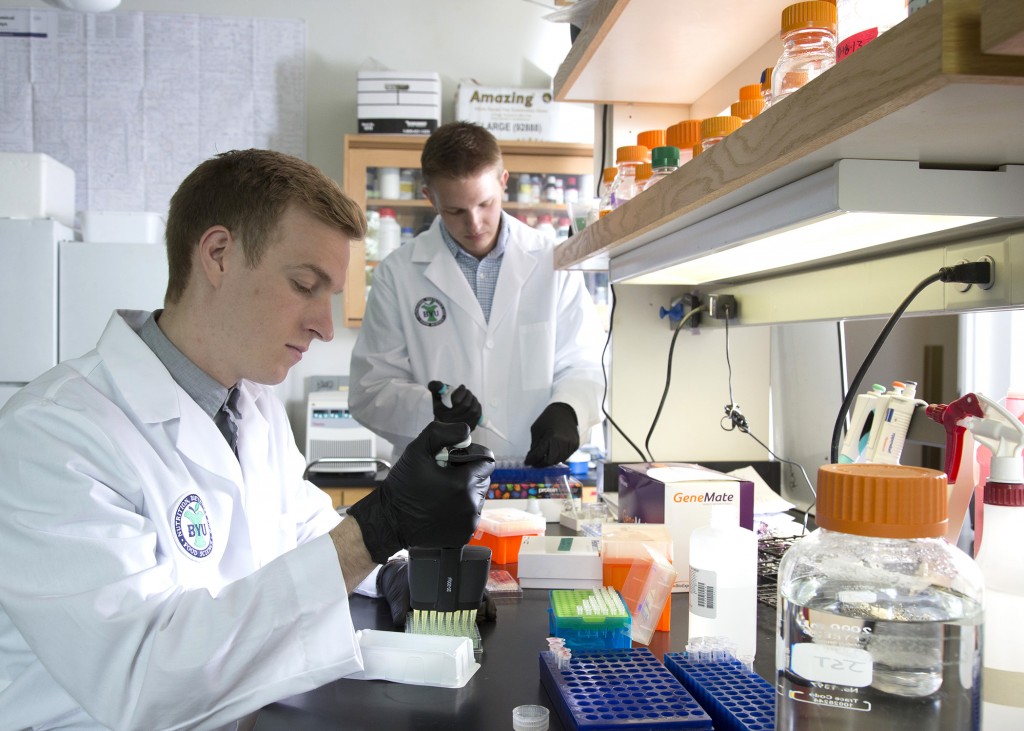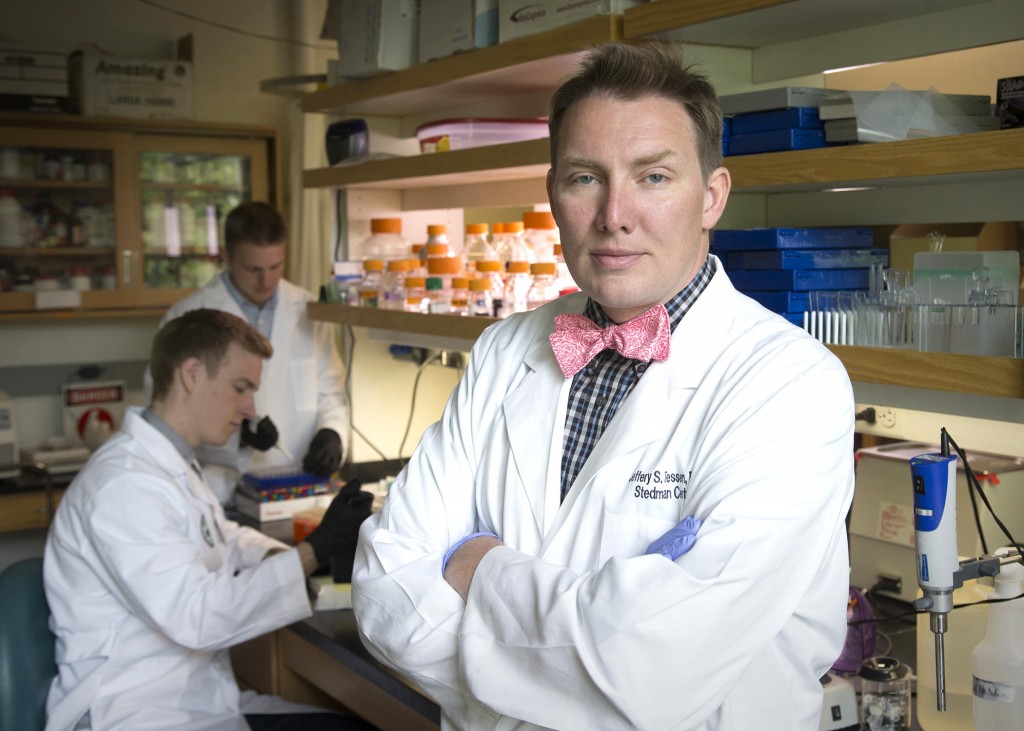
Benjamin Bitner’s life revolves around the clock. Before he can sleep, exercise or eat he has to be aware of and plan for his blood sugar levels and intake of carbohydrates. Like millions of Americans, Bitner has type 1 diabetes.
Bitner is part of a team of BYU student researchers, led by BYU food science professor Jeffery Tessem, who have taken steps to finding a cure.
“I try very hard to not let diabetes define who I am or what I can do,” Bitner said. “In fact, I am trying to define diabetes.”
In an on-campus lab, Tessem and his students have discovered that the gene called Aurora Kinase A plays a role in the proliferation of beta cells and maintaining insulin secretion.
“In type 1 diabetes, one of the main problems is that the beta cells which produce insulin that lets you control blood glucose levels get killed,” Tessem said. “Most of us have produced all the beta cells that we have by the time we are adolescents, so the amount of beta cells we have is what we’re going to die with.”
Tessem and his team are currently focused on defining all of the genes in a molecular pathway that are related to beta cell growth. Aurora Kinase A is one of those genes.
Carrie Draney is pursuing her master’s degree in nutritional science at BYU and was the one who set up and ran most of the experiments that led to the discovery of the Aurora Kinase A gene. Her discoveries were published in the academic journal Islets, a journal dedicated to research on beta cells, insulin and other elements of diabetes.
“Diabetes research is so novel that it hasn’t had very much research done, very little findings,” Draney said. “There’s obviously not a cure for it. I think that whatever we do find is super important to the field.”
The hope is to one day remove the need for pumps and injections and help cure diabetes from the inside out rather than relying on current method of treating diabetes from the outside in.
“We think that right now the treatments for diabetes are fantastic but are little more than putting on a band aid,” Tessem said. “Insulin is wonderful, and it allows the diabetic individual to live their life as best as possible, but quality of life can be improved.”

The core motivation behind all of the work done in Tessem’s lab is to improve quality of life. For lab students Mathew Ballard, Benjamin Bitner, Chad Tidwell and Sam Grover, that motivation has personal roots because they all have been diagnosed with type 1 diabetes.
The students are not just looking into cells and divisions and molecular pathways. They are digging deeper into their own lives. Every discovery they make and every step closer they come to a cure, the more they understand themselves.
Professor Tessem is grateful to have motivated and exceptional students in his lab.
“I’ve got some of the best students on campus,” Tessem said. “They do a great job. They are not just focused on researching diabetes to find a cure but also reaching out to students on campus who are diabetic across all majors.”
Student researcher Sam Grover started the free-to-join BYU Diabetes Club for diabetic students on campus. The club provides a place where students can come together, provide support for each other and increase knowledge on their shared condition.
The goal of the club as posted on the BYU Club’s website is “to promote diabetes awareness, support, and friendship to those affected by type 1 and type 2 diabetes.”
To reach out to the club, send a tweet to @BYUdiabetesclub or send an email to .




